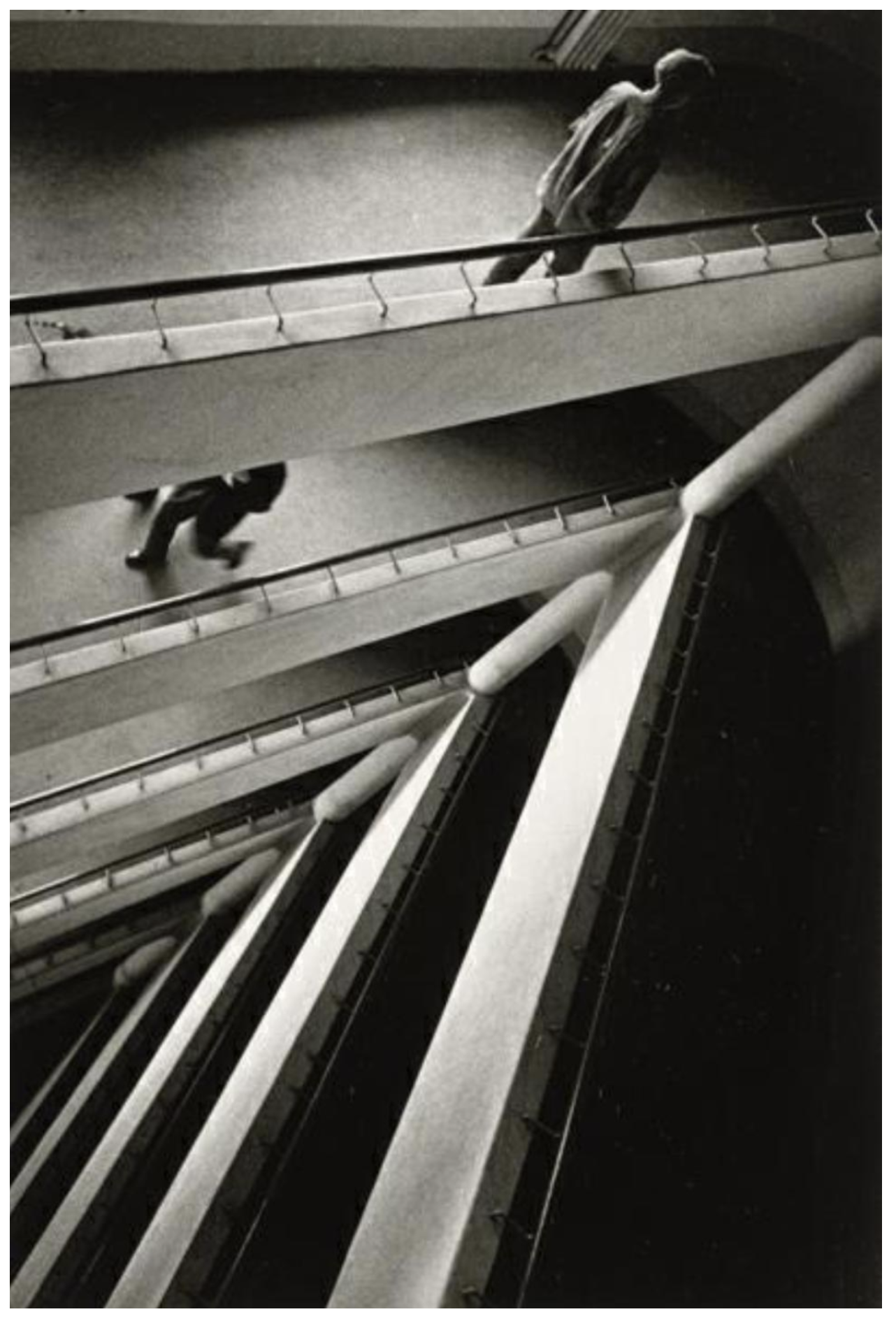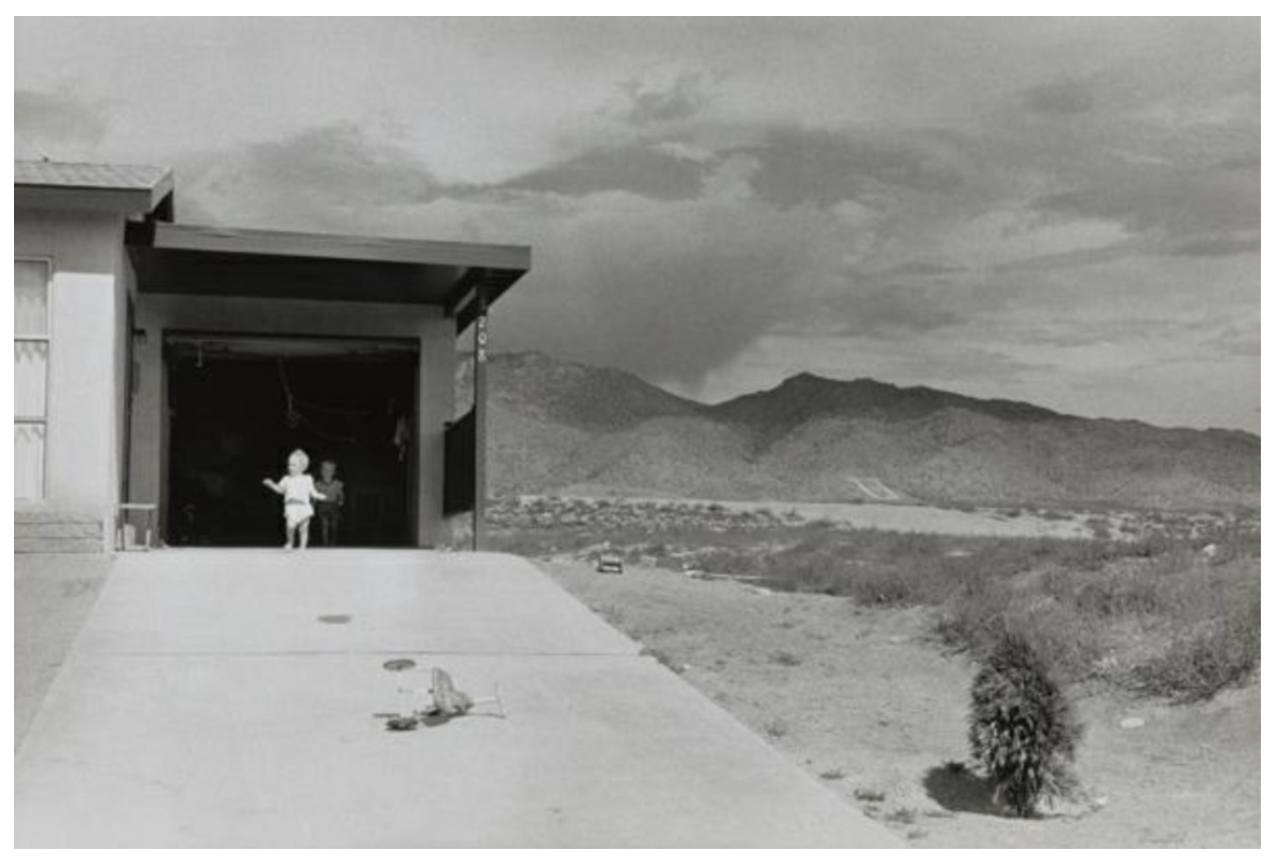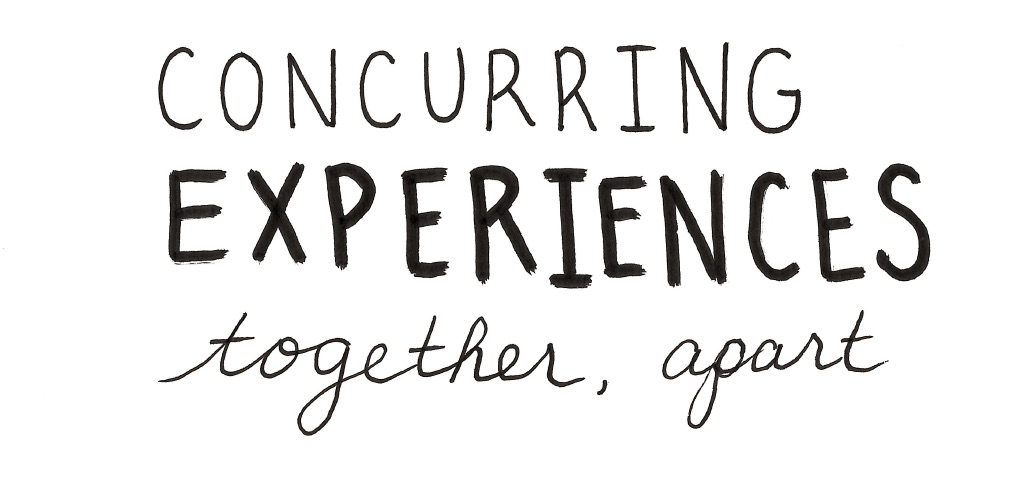Awaken Adapt
Vladimir Syomin
Gelatin silver print
39.37 H x 26.04 W cm (15 1/2 H x 10 1/4 W in)
Gift from the Trustees of the Corcoran Gallery of Art (Gift of the artist)
© Vladimir Syomin
Text by Heather Herbstritt
Untitled [Church Ruins], 1980
Image Description:
From a high vantage point, Vladimir Syomin captures the soaring walls of worn church ruins that extend upward without a roof, almost touching the top of the picture plane. Their narrow gothic windows allow parallel stripes of white light to snake across the snow dense ground. The inner landscape of the church’s floor is vacant. The structure is desolate, time worn, and bare. Standing at the center of the photo in a strip of highlight is a small figure dressed in black, casting their own attenuated shadow.
Syomin captures a hollowness that pervades the image in the chilling isolation of the landscape and figure. Seeing the figure dwarfed by aged ruins conveys a loneliness that is familiar. Syomin’s photo is key to this exhibition. It echoes the same forced severing from society that is felt today. Despite the photo’s date, there is a continuity in the notion of bearing witness. Similar to the figure having to watch their history and way of life crumble before them we too are bearing witness to a major societal shift that has changed how we live and in doing so severed us from our community.
Artist Bio:
Vladimir Syomin is a Russian photographer who lived in Russia during the Soviet regime. He was against the establishment that constantly penalized him for his Jewish heritage. Syomin was actively capturing the detrimental effects of the Soviet regime in 1980 when he shot Untitled [Church Ruins]. He would go to the edge of society, to the outskirts, to capture these images of dissolution and a people living without hope. In this image, the figure is forced to bear witness to the crumbling of their own past, their history, and their culture.
Boris Ignatovich
Gelatin silver print
50.80 H x 40.64 W cm (20 H x 16 W in)
Gift from the Trustees of the Corcoran Gallery of Art (Gift of Gail & Robert Carlsen in memory of Tom Ryan)
© Paul Harbaugh and the Estate of Boris Ignatovich
Text by Danielle Lane
Floors, 1933
Image Description:
Each layer of exposed floor sits as a distinct space united in the grander cohesion of the full photograph.
The people on each floor walk unaware of the happenings below and above them, but from the angle of the photographer the viewer can see people as they mirror and parallel each other. Floors creates a captivating narrative, raising questions and blurring the line between spaces- playing with each floor as simultaneously its own distinct space and as a smaller part of the bigger picture. By walking each floor, people unwittingly take part in the larger scheme, forming connections to people on floors below and above in ways that will forever be unknown to them. Only the camera from this one angle can recognize and document the broader levels that tie people together in complex and obscured relationships.
Artist Bio:
A prominent journalist turned photographer, Boris Ignatovich adamantly believed in only photographing what was absolutely necessary to convey an idea or emotion. Not one to entertain visual excess, Ignatovich focused on geometric shapes, light, and shadow to create visual illusions and play with the viewers’ understanding of what they were seeing. Floors provides a poignant example of his way of thinking, depicting layers of stairs and floors from a purposeful angle to create geometric push and pull.
Garry Winogrand
Gelatin silver print mounted on Fabriano Classico paper
37.46 H x 50.16 W cm (14 3/4 H x 19 3/4 W in)
Gift from the Trustees of the Corcoran Gallery of Art (Gift of Raymond W. Merritt)
© The Estate of Garry Winogrand, courtesy Fraenkel Gallery, San Francisco
Text by Alisoun Meehan
Albuquerque, New Mexico, 1958
Image Description:
Just left of center sits a late-1950’s tract home, built right in the middle of an undeveloped swath of land that is covered in desert scrub (a mixture of succulents like yucca, herbs, and a few grasses). Off in the distance are the Sandia Mountains, where clouds are hanging low, darkening the peaks, and just below, off to the right, a very large letter “U” can be seen painted in white.
In the 1950’s, Albuquerque, right off old Route 66, was undergoing an explosive growth in development. This house might be one of the first to be built in the area. The address is 1208 Muriel Street.
Looking up the driveway from the street, our central focus is on the toddler. Standing all alone, underneath the roof of a one-car garage, the garage door is open and behind the child is a very dark and shaded interior. The sun is bright and reflecting so much light off his blonde hair, pale skin, white short sleeves, with a diaper that appears to be unpinning itself. His facial features are indistinguishable. The toddler starts to look like an angel or a glowing cross as his arms are outstretched trying to steady himself as he’s about to start walking down the slanting driveway right into our arms. Winogrand captures a high contrast between a garage and child, which leaves the viewer with a feeling of tension. Perhaps family is not immediately present for the child, preventing him from falling.
A landscape of gradient tones gives off a sense of loneliness; this child and house are surrounded by miles of vast desert without other children nearby. Right after we engage with the child, our eyes follow the driveway back down the street, tripping over a tricycle lying on its side, and to the right in the shrubs another wheeled toy, and back down to the right hand corner where a shrub grows, the exact size of the child.
Artist Bio:
Born in 1928, raised in the Bronx, New York, Winogrand was known for his portrayal of American life. He spent hours on the street every day, taking 400 or 500 images, day after day. He made no effort to hide himself, or that he was taking pictures of people just feet from them. Winogrand used a Leica camera and a wide-angle lens, which added a false sense of distance from his subjects.
Winnogrand died in 1984, he was 56 yrs old. He left behind an archive that almost defies comprehension. It is thought to contain more than five million images, 1 million in color (2,500 rolls of undeveloped film, 6,500 developed but unedited rolls, and another 3,000 contact sheets).
To move into a better future together we need to listen to voices speaking against oppression and calling for social change. This show stands as a call to actively seek ways to center community and sustain actions to support one another. One way to do this is by finding a local Black, Queer owned independent bookstore to shop from whenever you need to buy a book.*
*insert book for anything you need to buy! Shop Black.
Here is one of our favorite bookstores in the DMV: Loyalty Bookstores
843 Upshur Street NW, Washington, DC 20011
823 Ellsworth Dr, Silver Spring, MD 20910
And some of our favorite books, if you are looking for good reads:
Sister, Outsider by Audre Lorde
The Will to Change by bell hooks
The Vanishing Half by Brit Bennett
Anodyne Poems by Khadihah Queen
Talking to Strangers by Malcolm Gladwell
How To Be Anti-Racist by Ibram X. Kendi
Black Futures by Kimberly Drew & Jenna Wortham
We Can't Talk About That At Work! by Mary-Frances Winters
The Bridge Called My Back edited by Cherrie Moraga & Gloria Anzaldúa
The Body Keeps Score: Brain, Mind, and Body in the Healing of Trauma by Bessel van der Kolk
Women Writing Resistance Essays on Latinx, Caribbean identity and on globalization by Julia Alvarez, Edwidge Danticat, and Jamaica Kincaid edited by Jennifer Browdy
Click to Continue to the Next Group of Photographs:
Or Return to Full Gallery:


![Untitled [Church Ruins], Vladimir Syomin](/sites/g/files/zaxdzs5196/files/downloads/Screen%20Shot%202021-02-02%20at%209.35.09%20AM_1.png)


